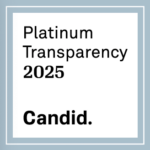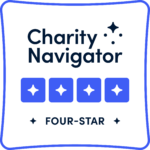Friends of Cancer Research hosted a forum on May 13, 2009 on Capitol Hill attended by a large audience of researchers, advocates, House and Senate staff members, employees of the FDA, NIH, NCI and HHS, as well as the general public. This event was held in conjunction with the publication of a white paper authored by an independent committee of 25 leading advocates, researchers and health economists, entitled Improving Medical Decisions Through Comparative Effectiveness Research: Cancer as a Case Study.
The report describes the experiences of the clinical and research oncology communities with conducting Comparative Effectiveness Research (CER) in the
The report received the endorsement of over 25 leading organizations including:
The moderated panel discussion on May 13th, centered on the top-line issue addressed in the publication: how best to improve medical decisions through the use of Comparative Effectiveness Research.
Ellen Sigal, PhD, Chair and Founder of Friends of Cancer Research, welcomed the audience and announced the publication of the whitepaper, capturing its primary conclusion by saying, “We need a new paradigm for CER.” She added that although this case study focused on cancer research and care, findings of the report are “ultimately applicable to all diseases.”
Susan Dentzer, Editor-in-Chief of Health Affairs, a policy journal, moderated the panel discussion. The panel included the co-chairs of the committee that authored the report, professional staff from the Senate Finance Committee and the House Committee on Energy and Commerce, and federal leaders from the Agency for Healthcare Research and Quality (AHRQ), the Food and Drug Administration (FDA), and the Office of the Secretary of Health and Human Services (HHS).
One of the committee co-chairs, Dr. Al Benson, Associate Director for Clinical Investigations for the
Recommendations from the report
“The time is right for us to systematically and methodically review what we’re doing to develop information and guidelines that support and improve outcomes for patients”, said Kim Lyerly, MD, Director of the
The first recommendation calls for a comprehensive CER program, examining the totality of health care options, the diversity of the patient population, and how difference effect clinical outcomes.
The second recommendation, says Dr. Lyerly, involves taking “advantage of wealth of data that exist throughout the systems” to make more timely decisions beyond what’s possible using current published literature and data.
The third recommendation is for CER studies to support the development of “personalized” medicine. Dr. Lyerly cited situations where a population of people treated with a medicine may experience a small extension of life expectancy, but a smaller subgroup may have a dramatic positive response. “We don’t want to eliminate the opportunity for patients in subpopulations based on molecularly-defined characteristics to benefit.”
The fourth recommendation is to “make sure there are mechanisms in place to inform healthcare providers and also citizens.”
Comparison of findings with current government initiatives & priorities
The moderator then asked Carolyn Clancy, MD, Director of AHRQ and member of the Federal Coordinating Council on Comparative Effective Research, if these core recommendations aligned with the federal vision for CER. She responded by invoking the enthusiasm of the Apollo 13 mission: “We’re happy, we’re proud, we’re excited.”
Dr. Clancy cited ongoing collaboration since 2005 on the Federal vision, with a serious focus on external stakeholder input. AHRQ’s primary focus with CER has concentrated on solving real-world, practical problems through coordination with the National Institutes of Health (NIH) and the National Cancer Institute (NCI). “What this paper does is inspire us and give us a vision of what’s possible and elevate those one-off collaborations to something that’s more systematic.”
Neera Tanden, J.D., from the Office of the Secretary of Health and Human Services, mentioned the priority within HHS for stakeholder involvement in determining how to spend the money set aside by Congress. She also spoke of the need to make sure “information gets out effectively to providers”. She was encouraged by the common themes in this report compared with forthcoming recommendations from HHS.
When asked about the concerns many people have expressed – that CER might take away care, Tanden stressed that the Administration’s priority is to explain CER and ensure that all involved understand the following: “We’re not rationing care in any way shape or form.”
“On the Federal coordinating council our discussions are centered on how to make funding most effective — not about rationing care or prescribing that only one treatment will be used.”
The moderator then asked Janet Woodcock, MD, the Director of the FDA Center for Drug Evaluation and Research, how continued advances in Comparative Effectiveness Research fit into the work of the agency. Citing past milestones in bringing drugs safely to the marketplace, she said, “We’re on another cusp. What CER is about is moving medicine from an art to a science. We should have rigorous information. Patients deserve that.”
Dr. Woodcock continued, describing how part of the research will include population-based studies and the other requires basic biomedical science. “These two things are coming together, and what I’m seeing is huge blossoming of new science.” She anticipates that one practical advance for communicating publicly agreed-upon knowledge is to put the information directly onto drug labels or device labels.
Susan Dentzer, the moderator, summarized Dr. Woodcock’s statements by saying, “CER is going to be the enabler of personalized medicine, not the enemy of personalized medicine.”
Dr. Woodcock responded by saying, “It’s not that every person will have a separate treatment. It’s that we’ll subset people better, we’ll be able to identify characteristics of people with their disease and then give treatment based on those markers. You need the big picture that Comparative Effectiveness Research provides. I don’t see these in conflict with one another, but I think we need to concentrate on both of them.”
How does CER fit into U.S.
Shawn Bishop, representing the Senate Finance Committee chaired by Senator Max Baucus (D-MO), responded to a question from the moderator about the role of CER in U.S. Health Reform. “We’re in the process of developing legislation for comprehensive health care reform. The President wants to sign a bill this year … that’s what we’re pushing for.” She cited tremendous interest in CER by committee members at all levels.
“We need to have this as part of the redesign of the healthcare system. CER is part of the expectation of health care reform. Our goal is to bring a proposal for a permanent approach for CER to the healthcare system.”
“In the Senate we proposed an independent institute with funds from the private and public sector”, she added.
The moderator then offered a similar question to
“What I’m most encouraged by is that across the board – House, Senate, and Administration – they are all specifically focused on CER.” He expressed further optimism by saying, “I think this is the best opportunity we’ve had to advance the practice of medicine.”
How can data and technology platforms come together to support CER?
The conversation moved to the subject of data and technology platforms needed to advance CER. Dr. Lyerly commented that leadership is necessary to connect the many repositories of research and clinical data. “There are technology and biotech solutions, but there isn’t anything better than vision and leadership to affect this.”
Dr. Clancy mentioned that AHRQ is working very closely with FDA and other colleagues to build common data definitions rather than a huge centralized repository. In this scenario, data stay with the healthcare organizations, but common data definitions allow collection of large data sets as needed.
Questions from the audience
The panel concluded with questions from the audience, and this dialogue generated several additional insights.
On the question of whether or not CER will save money in addition to generating value, Dr. Clancy offered that what’s “most important to patients is effectiveness — Does this work? But they want to know about safety and they want to know about cost.” She added that CER also might identify effective treatments that are underused. Neera Tanden offered that the most important goal is to ensure effective protocols, but that technology advances may result in more cost-effective treatment.
On the subject of how funds will be spent (research versus infrastructure), Dr. Woodcock highlighted the need to lower barriers for clinicians throughout the country to participate in clinical trials.
Finally, the panel discussed how to integrate CER guidelines into daily clinical practice. Dr Benson said it’s going to take “ongoing education, integrated into medical training programs”. Dr. Woodcock added that it is essential to “not just educate folks, but enlist them. If people have a stake in the research and results, you have much more of a stake in the guidelines that come out.”
The moderator closed the discussion by echoing an earlier statement by Dr. Clancy. “We have a lot more to do.”

